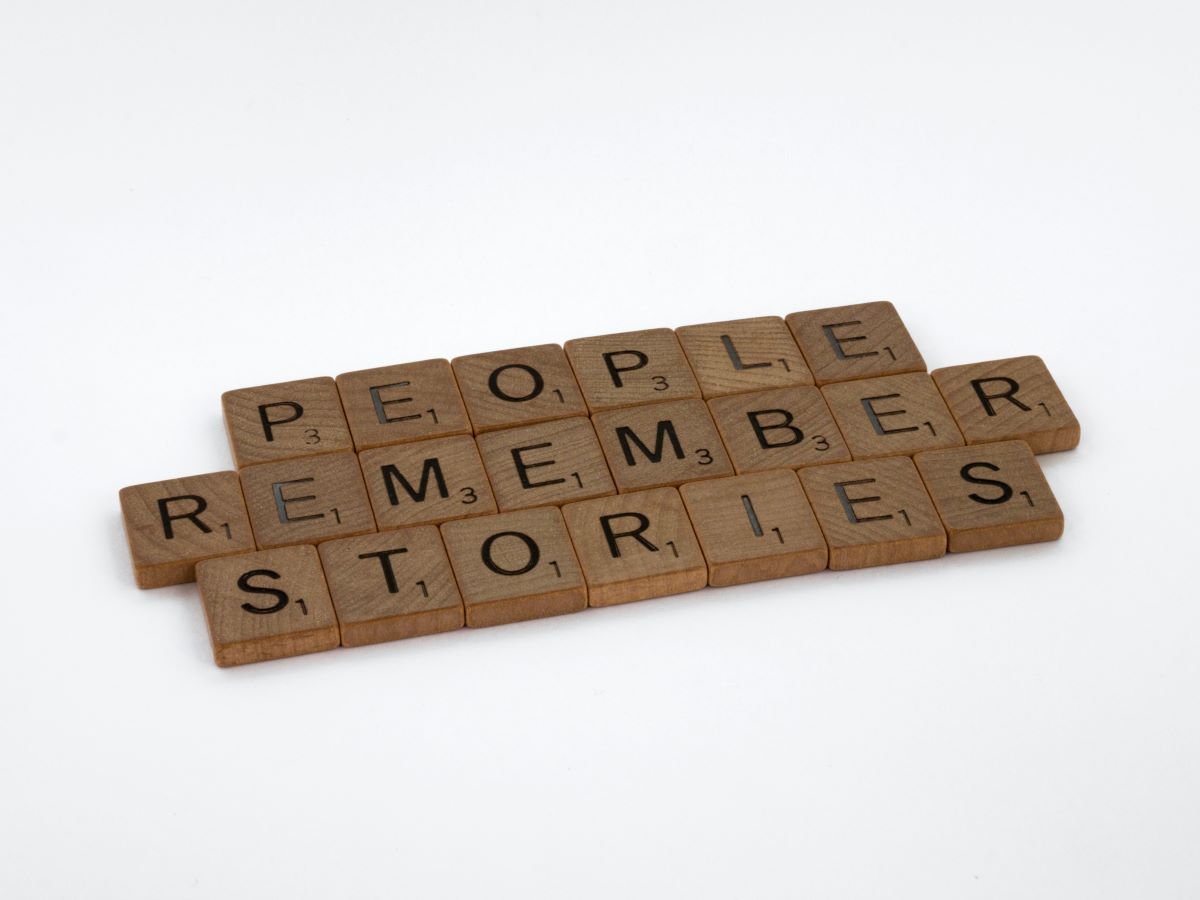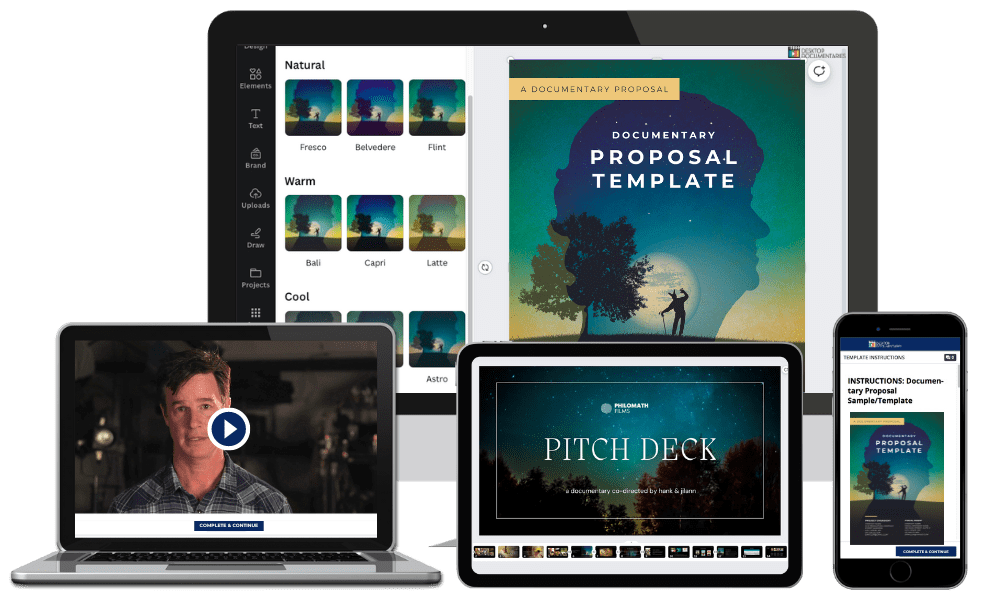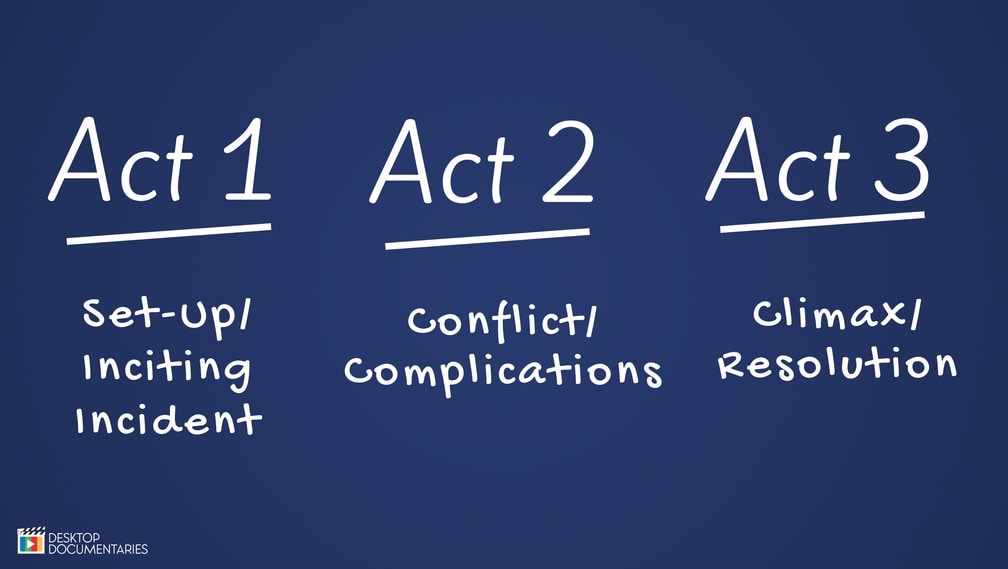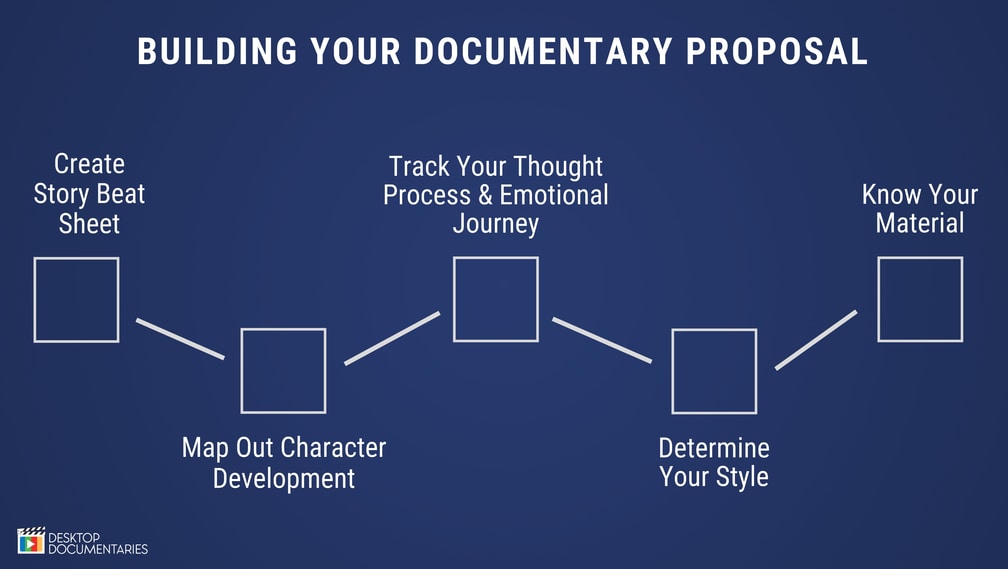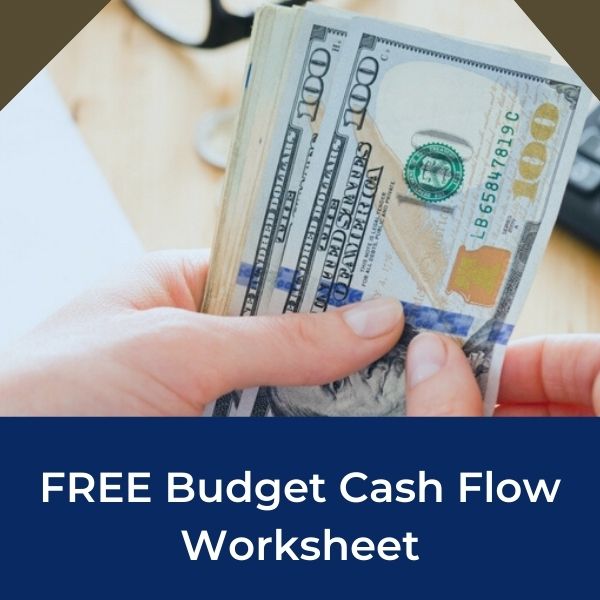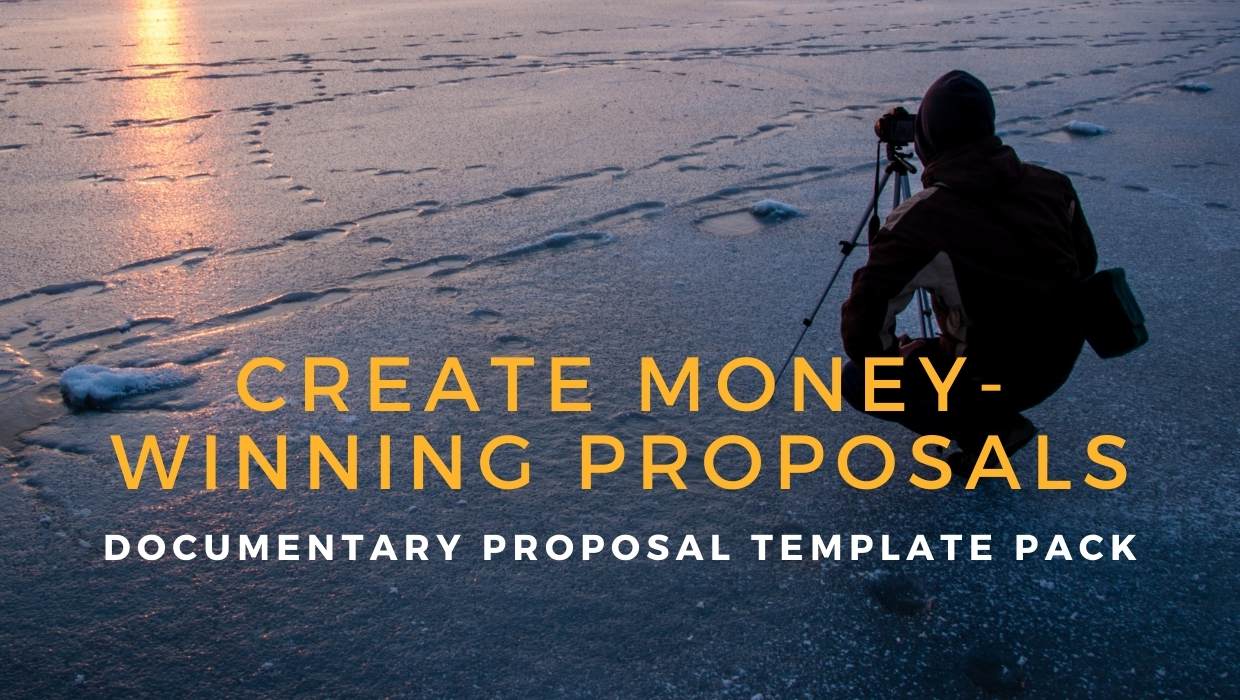DOCUMENTARY PROPOSAL STRUCTURE:
5 Helpful Tips To Create A Money-Winning Documentary Proposal
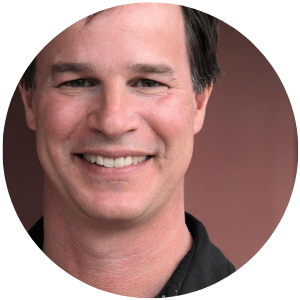 |
|
Have you ever been listening to someone tell a story and you find yourself losing interest?
They seem to be rambling and not have a point.
Maybe they started with a great premise that drew you in, but then they started going off on all these tangents, or confusing you with too many characters.
Their lack of focus disengages you from the story.
Why does this happen?
It is because they are missing a key element to the telling of their story....
...STRUCTURE.
Need Help With Your Proposal?
For more guidance on story structure and all the elements of your documentary grant proposal, check out the Documentary Proposal and Pitch Deck Template Pack.
The same goes for writing a great documentary grant proposal—there must be a clear structure to your story in order to keep the funder engaged and interested. They want to feel like they are in the hands of a capable storyteller.
Put simply, story structure is how you arrange the events and elements of your story—what is your beginning, middle and end?
You could think of your structure as consisting of a set up of the narrative (an explanation of the characters, situation and subject matter that you are documenting), followed by a development of this narrative through the events, characters, goals, obstacles, and raising of stakes and then finally a conclusion.
Related: How To Create A Documentary Pitch Deck
The Three Act Structure
One method to help structure your documentary proposal is to use the 3-Act structure as a guide.
Essentially, Act 1 contains the set up and the inciting incident (the catalyst that gets the story going); Act 2 comprises of the conflict and complications; Act 3 wraps the story up with the climax and resolution.
Basically, what is needed in your documentary film proposal is a clear overview of how the story with play out from fade-in to fade-out. And it doesn’t have to be chronological, although that can be a good place to start in order to get rolling on a first draft of your story structure.
The important thing to remember is that you must have a clear progression in your story from your beginning, through the middle, to an end.
No rambling, no tangents, no confusion.
Here are five hands-on tools to help you come up with a structure for your documentary film proposal:
5 Helpful Tips To Create (and Structure) A Money-Winning Documentary Proposal
Documentary Proposal and Pitch Deck Template Pack
1. Create a story beat sheet
This is a basic outline of your plot, comprising of the scenes and events you have filmed. You can make this from the scenes that you have shot, or that you plan to shoot.
If you haven’t shot all of your footage yet, it’s okay to make an educated guess based on reasonable assumptions and circumstances. You’ll want to make a master list of all of your scenes, and then pare it down to only the most essential to include in your proposal.
2. Map your characters’ possible development
Discover structure through a character’s potential journey, or their actual journey if you’ve already gathered all of your footage.
What happens to each character in the various scenes you’ve shot?
What will be each character’s arc, from their own personal starting point in the story through their outcome or transformation?
What Is A Character-Driven Story?
3. Track your own thought process and emotional journey
What are you curious about? What do you need to know more about, and at what point, in the story? What makes you feel emotion, tension and resolution?
Chances are that your audience will need the same information and feel similarly to you in a general sense.
Use your own curiosity and questions as a guide to determine how and when to parse out information in the film.
This can help tremendously to formulate structure.
4. Determine your style
Stylistic choices can help you formulate structure. For example, any interesting or unique elements of storytelling that you plan to implement, such as re-enactments, animation, or the use of a storytelling device and/or container can dictate structure.
In other words, if your film is about baseball, and you want to structure the film in nine metaphorical innings, what does each story inning contain or reveal?
5. Know your material
Watch and log your footage and get your interviews transcribed. The more familiar you are with your footage, the better you will be able to write about your best scenes with vivid details and visuals, and even excerpts of dialogue—funders want to know what the film will look, feel and sound like.
By stringing together some of your best scenes in a possible order, you’ll make good headway on structure and have enough to put down on paper for a funder.
Need Help With Your Proposal?
For more guidance on story structure and all the elements of your documentary grant proposal, check out the Documentary Proposal and Pitch Deck Template Pack.
About The Author
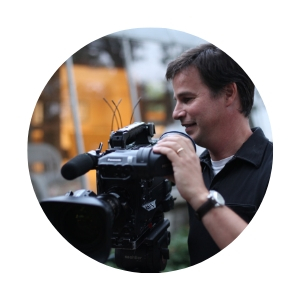
Hank Rogerson is an award-winning documentary filmmaker with credits including SHAKESPEARE BEHIND BARS, which had its world premiere at the Sundance Film Festival, picked up 11 awards on the festival circuit, and was broadcast worldwide. He produced and directed HOMELAND and CIRCLE OF STORIES for National PBS.
He is the co-founder of DocuMentors and is a former professor of filmmaking at Santa Fe University of Art and Design. Hank’s latest feature documentary STILL DREAMING premiered at DOCNYC and debuted nationally on PBS.
Hank has worked on a range of documentary projects—from feature docs to interactive non-fiction, from TV episodic doc shows to branded doc content. He has worked with such clients as PBS, BBC, Sundance and Discovery, and his films have twice premiered at Sundance, and been shown the world over.
Hank is the instructor/co-creator of the Documentary Pitck Deck and Proposal Template Pack.
Other Articles You May Enjoy
- Documentary Grants: What Is The Documentary Core Application?
- How To Create An Accurate Documentary Budget
- Documentary Fundraising Tips
- 10 Helpful Hints For Writing A Cash-Winning Documentary Grant Proposal
Documentary Pitch Deck / Proposal Template Pack
Documentary Budget Template Pack (Bundle)
